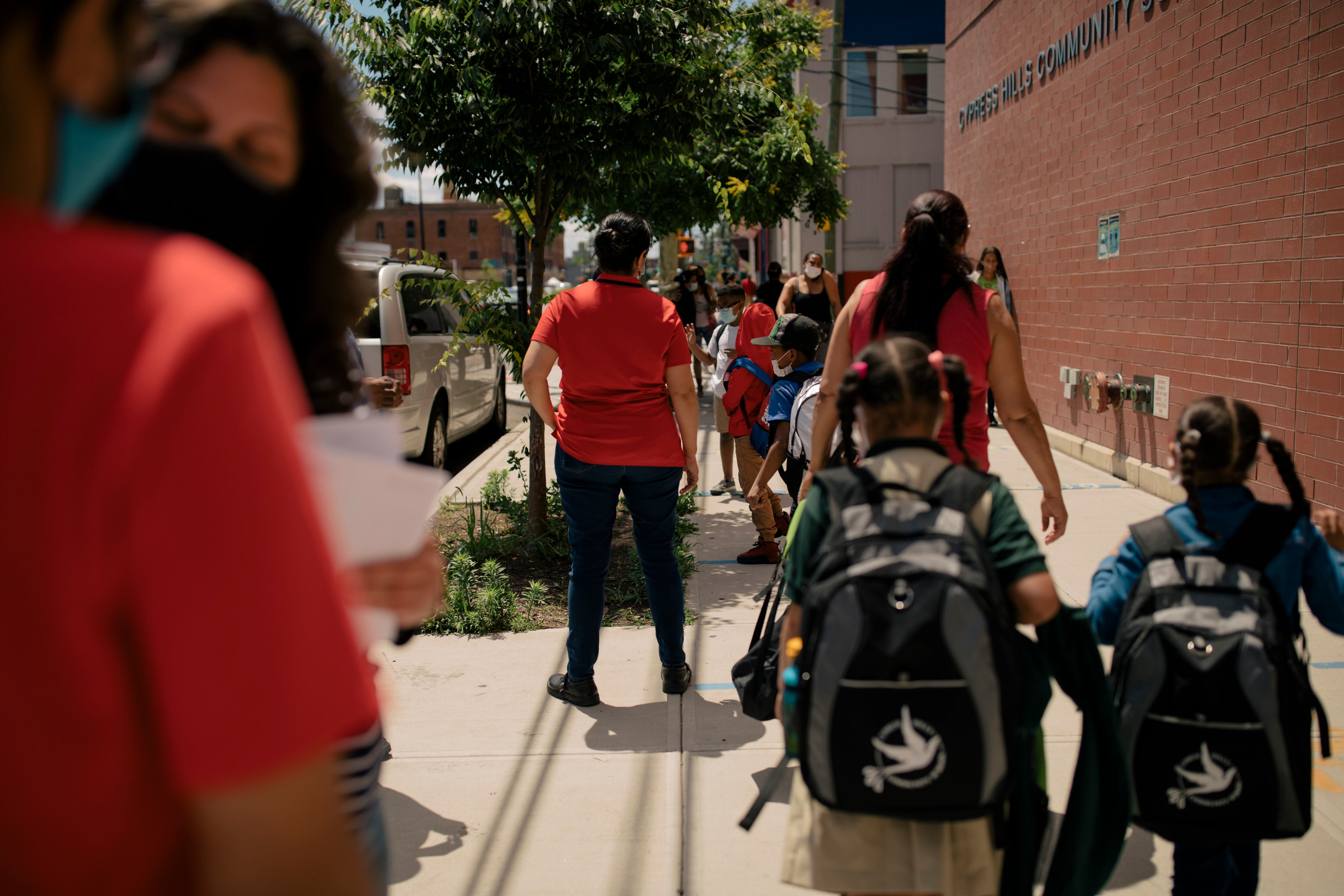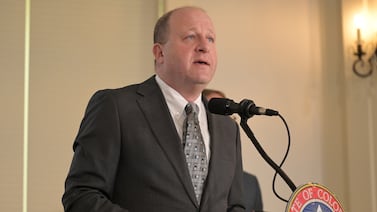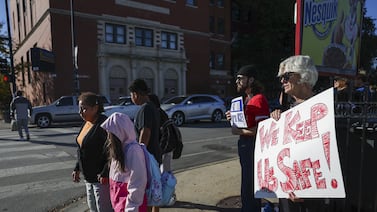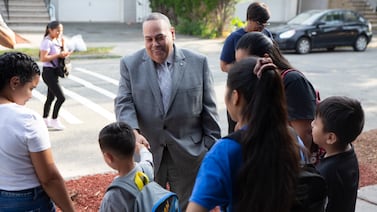When New York City school officials introduced a new COVID policy during winter break, panic spread among many Bangladeshi parents in parts of central Brooklyn.
In a letter to families, officials said students could now stay in school if exposed to COVID, as long as they tested negative on at-home tests. The letter also said officials “strongly encourage” children to get a test before returning to school — which, in the Bangla version, read like a mandate to families, said Tazin Azad, a member of District 22’s Community Education Council who speaks Bangla and monitors multiple WhatsApp groups for Bangladeshi parents.
“Our WhatsApp was blowing up: ‘I can’t find my site for testing,’ [and] ‘How am I gonna send my kids to school?’” Azad said. At the time, ballooning COVID cases in the city had created long lines for tests and delays in returning results. Some parents kept their children home from school because they didn’t have test results before the first day, she said.
“We had to go down the chat and say, ‘No, you do not require a test to return to school.’”
Evolving COVID rules have been confusing enough for native English speakers. Parents who speak limited or no English have found it difficult to understand and get answers about the protocols, say educators and advocates who work with immigrant families. That communication gap is often filled by parent leaders and community groups when families can’t get assistance from their schools or are waiting for translated versions of guidance from the education department.
“It’s us parent advocates who are filling in these gaps and making [sure] folks [are] really understanding what’s totally necessary and keeping them from burning out,” Azad said.
Suzan Sumer, a spokesperson for the education department, said translated COVID guidelines can be accessed through “family letters, over-the-phone translation services, and online services.” They can also call (718) 935-2013 for translation help or email Hello@schools.nyc.gov, and parents can choose from a dropdown menu of languages to translate the education department’s website.
But advocates have long said that many families are not aware of those options, don’t know how to navigate the internet, or can’t get the help they need quickly.
Clearing up confusion
Many of the misunderstandings stem from English words that don’t cleanly translate into other languages.
Many Spanish-speaking families also thought that they had to get their children tested before returning to school, said Vanessa Luna, co-founder of ImmSchools, a nonprofit that holds family workshops and professional development for educators on supporting undocumented students. Families “are aiming to follow what the school is telling us, so a term like ‘strongly encourage’ — even if you translate that in Spanish, it sounds like it is a mandate,” she said.
Parents may also want to be extra cautious: If they’re not sure about whether something is a requirement, they may do it anyway to ensure their children can be in school and they can go to work, she said. Less than a month after the city announced its “test-to-stay” policy, officials announced they would shorten the quarantine period to five days if sick children meet certain criteria first. The announcement of that policy, which went into effect Monday, has caused a new wave of questions from parents, according to teachers and advocates.
Undocumented parents are also asking about how required paperwork, such as permission slips for in-school COVID testing, will be used because those families often fear that sharing personal information will negatively impact their immigration status, Luna said.
She’s heard of some schools calling parents to ensure they understand the guidance. But both she and Azad think schools should hold more meetings for parents to ask questions that may not be clear from reviewing the letters that go home to families.
“My argument and my push would be, can we create spaces where families can engage in dialogue and conversations?” Luna said.
Earlier this month at Brooklyn’s P.S. 194, where about 11% of the students are English language learners, some children who needed to take at-home tests told teachers that their parents couldn’t figure out the instructions, said teacher Kathryn Malara.
One family sent two of their children to the school with their positive at-home tests in their backpacks, which teachers discovered later that day. Malara believes that the parents, who do not speak English at home, were simply unsure about what the results meant and what to do next.
When a child is exposed to COVID, the school has emailed guidance to families with attachments in Spanish, Urdu, Russian, Arabic, Chinese, Haitian Creole and Bangla, made available by the education department. But some families don’t have computers at home and use their phones, so the attachments might not show up well on the screen, Malara said.
Sometimes parents have come to the school for help with COVID guidance. Malara said the school will use Google translate to communicate with families or ask a parent for help with Urdu and Arabic, because they don’t have staffers who “speak every language that is spoken at home.”
Parent leaders and community groups step in
When schools were first charged with distributing at-home test kits to children, Azad heard from school leaders who were concerned about the lack of translated instructions for certain brands. So, in the first week of January, Azad created Bangla and Urdu versions of instructions for the FlowFlex brand of COVID tests, which District 22 leaders later distributed to schools, she said. (The education department declined to confirm that.)
One of the city’s Internationals Network high schools, which serve new immigrants, made their own video tutorials in Spanish, French, and Arabic when they discovered their iHealth at-home test kits did not come with written, translated instructions, according to a teacher there who asked to remain anonymous because she feared retribution.
The videos, reviewed by Chalkbeat, are a compilation of photos, videos, text and cartoons to explain how to properly swab your nose and test the sample. Staffers made and emailed out the videos soon after kits were distributed to schools, and some teachers also called parents to ensure they understood the instructions, the teacher said.
The education department posted links to various translated instructions for iHealth and FlowFlex on Jan. 12 — 10 days after winter break ended — though no translations are posted for brands BinaxNow and Carestart, and some of the brands don’t have all of the city’s ten most commonly spoken languages.
A department spokesperson said New York City schools are legally not permitted to translate documents made by third parties, and the translated instructions on their site are compiled from other sources. Interestingly, one set of translated instructions was created by Boston Public Schools.
COVID guidance distributed to families have links to the department’s COVID web page, but not a direct link to the translations they’ve made available.
“Do they consider the steps parents have to go through to even find it?” wondered the Internationals school teacher, adding that could be particularly difficult for families who are not used to navigating the internet.
Luna’s organization has been creating slide decks that go through testing requirements for schools.
They’re also hosting in-person meetings for families next month around COVID protocols so parents can ask follow-up questions instead of relying on written guidance.
Turning to WhatsApp
Parents are also turning to their group chats for support, as many families did when COVID first hit. In a WhatsApp group monitored by Luna’s organization, she’s seen parents help each other parse through COVID rules, figure out how to take the at-home COVID tests, and dispel vaccine misinformation, she said.
“It’s families really informing each other,” she said. “I think for us, the WhatsApp group has become a virtual hub of resources.”
Azad, the District 22 parent, said her WhatsApp groups explode any time new guidance drops. She and others are constantly clarifying new COVID rules. It’s especially hectic if new guidance becomes public on the evening news or on a Friday night but isn’t yet available in Bangla, Azad said.
The confusion about COVID rules and protocols has persisted through January. One parent recently told Azad that her child’s prekindergarten center was requiring a negative test before her child returned to school, following a COVID infection and 10 days of quarantine. Azad informed the parent that is not city policy, she said.
“When non-English speakers are faced with varying types of guidances, they can’t push back and demand the way English speakers do,” Azad said. “People who don’t speak English wait for us on the ground who are translators, who are supporters and advocates to give them legit information, translate it and give it back.”





